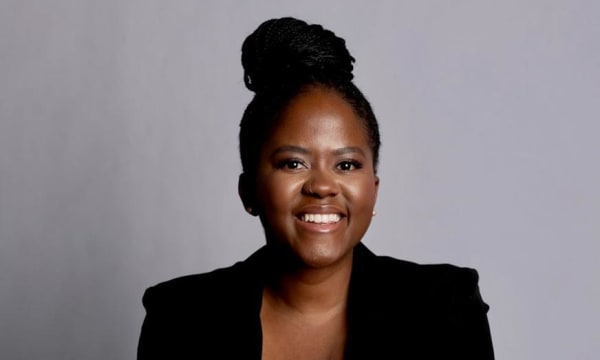By Baxolise Mfidi, Social Media Team Lead at VML South Africa
Considering the disruption of new technology, the growing trend of deinfluencing, and instances where some collaborations between brands and content creators have gone completely awry, now is a good time to reflect on how viable the creator economy is – both for brands who intend to reach wider audiences through influencer marketing, and the content creators who have the platforms with those sought-after communities. Here’s a look at what is and isn’t working.
Authenticity has not gone out of vogue
A word that keeps coming up when it comes to brands working with influencers is “authenticity,” which can be achieved when brands partner with the kind of influencers who either use the brand's offering or live a lifestyle that is compatible with it. In both scenarios, the audience buys into the promotion because of how the influencer incorporates their truth and individuality into the content in a natural way.
When South African TV presenter Jeannie D collaborated with Huawei to promote their Mate 20 Pro, users on the platform X quickly pointed out that her post for the campaign was uploaded via Twitter for iPhone. The tweet was later deleted but what we learnt from instances like this is how smart audiences are.
Moral of the story: Always err on the side of authenticity. Audiences notice the cracks in a false partnership or brands using content creators and influencers as billboards on social media and will waste no time calling out the brands and creators involved. Brands and influencers alike should look at how well their values and messages align before considering anything else.
Close, but no conversion
More recently, Snoop Dogg partnered with Solo Stove, in which they named him their “smokesman” for a campaign promoting their smokeless fire pit. The rapper piqued the interest of audiences across social media with a vague announcement saying he was "giving up smoke”. A follow-up post revealed his connection to the smokeless fire pit.
Unfortunately, the social media buzz did not match the bottom line and the company reported that “it did not lead to the sales lift that we had planned.” In this unique scenario, we see how a popular face does not always equal conversion. In addition, the creativity of grabbing people’s attention with the announcement did not attract enough new customers or appeal to the existing ones.
Moral of the story: Brands need to be clear on their objectives and make sure the campaign and the creator they’re partnering with are aligned with them. A famous face may create awareness, but in some cases a less well-known influencer that feels more relatable for the target audience may generate more sales.
Rise of the anti-influencer
One of the viral trends on social media from 2023 was “deinfluencing”. This trend, which was made popular on TikTok, involves creators telling their audiences why they should not buy certain products. It’s been billed as a rebellion against hyper-consumerism and overconsumption resulting from overhyped mediocre experiences and overly expensive products that are promoted by influencers.
Search "deinfluencing" on TikTok and you’ll see thousands of videos emphasising one of the faults of the creator economy: the trap that some influencers fall into of prioritising the profit to be made or the popularity to be gained from promoting a brand over the ethical contradiction that may exist with a campaign.
Moral of the story: The creator economy is forced to evolve along with its audiences. The TikTok generation has different expectations of the content creators and personalities behind the content they follow. Nano influencer or celebrity, fans are looking to follow public figures who are engaged in social ethics. In this climate, influencers need to interrogate potential brand partnerships and ensure that every partnership they enter into is one they would be willing to defend. Similarly, brands need to be intentional about how they work with influencers and avoid the culture of frivolous freebees that characterised the early days of the creator economy.
Robo influencers vs humans
Almost as soon as social media influencers started popping up on every platform, AI influencers followed suit. Miquela (@lilmiquela) is one of the accounts that are still active, with 2.6 million followers on Instagram to date. What is an AI influencer? Simply put, they are influencers whose persona is generated using AI technology. Their appearance, how their page is run, and their overall digital presence simulates a human.
For brands, digital influencers come with a few perks in that they are not as unpredictable as humans – they're less likely to be cancelled, they don’t age, and they don’t go off message. But they can be expensive to develop, require a huge amount of work to make them feel authentic, and won’t resonate with all audiences.
Moral of the story: For real-life influencers, there may be no visible competition yet, but much like how AI has disrupted many other industries, AI influencing is a trend they need to study closely. As other industries are having to strategise around AI disruption, creators also need to be prepared to compete with AI or find a way to pivot and incorporate the tech into their offering. Brands should be open to exploring the capabilities that AI has opened to them, but they also need to be careful not to jump onto the trend just because it’s new and exciting. They need to consider whether it is a good fit for their market, audience and brand.
Realistically, the creator economy has not reached a point if irrelevance. On the contrary, there is still potential to grow as an industry. The influencer and content creator who can stay true to who they are in their content while also paying attention to the changes taking place around them is the creator who will likely maintain reasonable success throughout their career. And the brand that puts authenticity first and engages with creators as partners will reap the benefits of influencer marketing.


